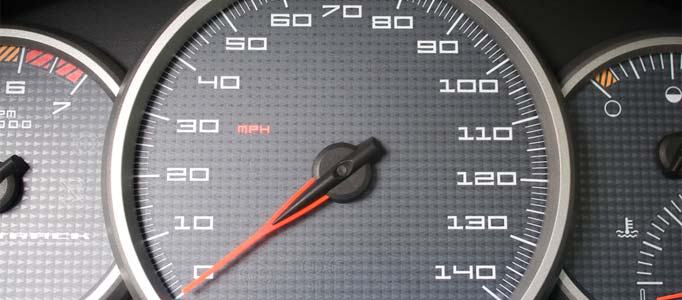Car clocking – more common than you think
When buying a used or nearly new car, mileage is one of the main things to consider. Wear and tear to an engine is inevitable over time, and the more miles it has covered, the greater likelihood something could breakdown or need replacing. Clocking a car’s mileage is a practice used by unscrupulous car dealers since cars were first being sold. Modern technology and databases have made it more difficult for a dealer to get away with it, but estimates still show that there is approximately 600,000 clocked cars on the road, whilst the HPI vehicle check service believe 1 in 20 cars on the road could have clocked mileage. So how do you avoid getting ripped off?
What is clocking?
Clocking is the practice of altering a cars mileage reading (odometer) to change the amount the vehicle has covered. In the vast majority of cases, the mileage is reduced to increase the car’s sale value. This can mean reprogramming an electric display using a computer, or manually rewinding the odometer on an analogue display. This scene from classic children’s film Matilda shows one way it’s done.
Digital odometers are much easier to reprogram, with software and tutorials online making the process easy. Mileage correction companies will charge a fee to do this for you, often avoiding the difficult questions, turning a blind eye to the true reasons behind wanting a mileage change. Reducing the mileage can add hundreds of pounds to a car value, so the temptation can be hard to avoid. It is a crime to sell a car with incorrect mileage and not inform the buyer.
How can you avoid getting ripped off?
Fortunately, there are more and more resources available to buyers to help prevent purchasing a car with a clocked mileage. With a bit of knowledge and research, you can find out whether a car has a suspicious mileage.
Mileage description:
When buying a car, check how the dealer has described the mileage. It will normally be in one of three ways.
Warranted: The mileage of the car is correct and has the evidence to prove it. You should check through the history file to see the mileage readings on past MOTs and documentation. Any large gaps or suspiciously small changes over a long period of time should be examined more carefully. There could be a valid reason, but it is always best to check.
Not Warranted: The mileage has no history to back up its authenticity. When buying a car labelled like this, check through what history there is available. Sometimes files can become lost, especially if the car is older. You can check the car’s previous MOT history online. It is very much buyer beware, so you will want to inspect the car much more thoroughly.
Incorrect: The mileage is incorrect. This can be due to the odometer having been replaced, or a previous attempt at clocking the mileage has been spotted.
When buying a car, examining the history is a must. Any discrepancies or irregularities should immediately stand out, and if the history file is missing, ask yourself why that’s the case. Remember to check the small print or terms and conditions when buying a car from a dealer, to see what their exact stance is when it comes to the mileage reading and its authenticity.
Check online:
There are a number of vehicle check services online allowing you to examine a car’s history against DVLA and VOSA databases. Here at Creditplus, we perform a HPI Check on all cars we supply. Other vehicle check companies are available.
The vehicle check will inform you of the mileage across its previous recorded MOTs back until 2005. Before this date, MOTs were not registered online, so unfortunately you cannot check before this date. These vehicle check companies normally charge a small fee for checking a car.
Inspect the car thoroughly:
Have a good look at the car, see if there are any obvious signs of wear and tear caused by a large amount of use. Look at the condition of the upholstery and interior, see if it looks like it has been used. If there are any brand new parts visible, find out if this is recorded in the history file. If it hasn’t, this could be an attempt to hide an obvious fault.
Before you go and look at the car, check online for any car websites, blogs or forums specialising on the make and model of the car you are viewing. See if they have any list of common faults that come with a car’s age, and don’t be afraid to ask a question.
Walk away:
If in doubt, don’t be pressured into buying. Not only can an incorrect mileage mean the car you are buying is much cheaper than advertised, it can also mean the vehicle will need more repairs and could even be unsafe. If you have a question or concern that cannot answer in a satisfactory manner, then just walk away.
Clocking off
For more on car clocking, this segment from BBC’s The One Show takes a closer look at how it all works.
More driving tips:
Car Storage Solutions – Some handy ways to organise your car and maximise your storage space.
Pothole damage – What to do if your car is damaged by a pothole.
Cheaper Young Driver Insurance – Top tips to reduce the amount you pay.






 Facebook
Facebook Twitter
Twitter Instagram
Instagram LinkedIn
LinkedIn Youtube
Youtube